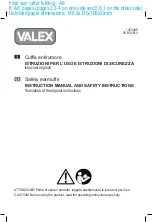
Functions
2.15 Flexible Protection Functions
SIPROTEC, 7SD80, Manual
E50417-G1140-C474-A1, Release date 09.2011
190
When setting the power threshold values, it is important to take into consideration that a minimum current of
0.03
I
N
is required for power calculation. The power calculation is blocked for lower currents.
The dropout of pickup can be delayed via parameter
T DROPOUT DELAY
. This setting is also set to zero by
default (standard setting) A setting deviating from zero may be required if the device is utilized together with
electro-magnetic devices with considerably longer dropout ratios than the digital protection device (see Chapter
2.2 for more information). When utilizing the dropout time delay, it is recommended to set it to a shorter time
than the OFF-command time delay in order to avoid both times to "race".
Parameter
BLK.by Vol.Loss
determines whether a function whose measured variable is based on a voltage
measurement (measured quantities voltage, P forward, P reverse, Q forward, Q reverse and power factor),
should be blocked in case of a measured voltage failure (set to
YES
) or not (set to
NO
).
The dropout ratio of the function can be selected in parameter
DROPOUT RATIO
. The standard dropout ratio
of protection functions is 0.95 (default setting). If the function is used as power protection, a dropout ratio of at
least 0.9 should be set. The same applies to the utilization of the symmetrical components of current and volt-
age. If the dropout ratio is decreased, it would be sensible to test the pickup of the function regarding possible
"chatter".
The dropout difference of the frequency elements is set under parameter
DO differential
. Usually, the
default setting of 0.02 Hz can be retained. A higher dropout difference should be set in weak systems with
larger, short-term frequency fluctuations to avoid chattering of the message.
A permanent dropout difference of 0.1 Hz/s is used for the frequency change (df/dt) measurand. The same
applies to the voltage change (dU/dt) measurand. The permanent dropout difference here is 3 V/s.
Renaming Messages, Checking Configurations
After parameterization of a flexible function, the following steps should be noted:
• Open matrix in DIGSI
• Rename the neutral message texts in accordance with the application.
• Check configurations on contacts and in operation and fault buffer, or set them according to the require-
ments.
Further Information
The following instruction should be noted:
• As the power factor does not differentiate between capacitive and inductive, the sign of the reactive power
may be used with CFC-help as an additional criterion.
















































